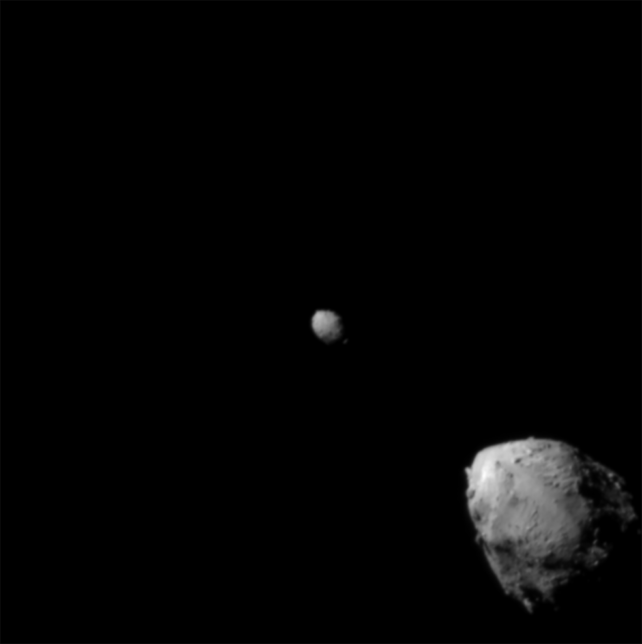
© Nasa
The moon, Dimorphos, is orbiting an even larger asteroid, Didymos, and while neither is in any danger of colliding with Earth, they're good test cases to see whether us puny humans smashing them with technology can cause them to change course.
DART is basically a demonstration of what would be a "Hail Mary" pass in the case of any asteroid actually threatening Earth — namely, can we use a human-made spacecraft to redirect any planet-killers enough that they end up safely whizzing by our home planet instead of causing a repeat of the extinction event that wiped out the dinosaurs.
NASA launched DART last November, using a SpaceX Falcon 9 to send the satellite on its collision course with Dimorphos.
The DART spacecraft smashed into the asteroid moon at a speed of roughly 6.5 km per second on Monday evening at 7:14 p.m. ET, with confirmation of impact coming in a series of images from its onboard camera.Next, NASA will be gathering data on whether or not DART actually had its intended effect. That process will take a few weeks, and include observations from Earth-based telescopes trained on Dimorphos and Didymos, as well as space-based observation from the James Webb and Hubble space telescopes. If it turns out this didn't work as intended, I guess it's back to the drawing board — my vote is for a fully operational Death Star.
Considering how much of the "space" is filled by asteroids, it's a wonder we don't get hit except for really rare cases.. And a huge asteroid apparently comes every few billion years, is THAT really any threat?!
The reasons behind all of this are never disclosed to the puny mortals.. Just like why the heck does one blow up nuclear bombs on the Moon.. "It's all for your safety fool, now pay the taxes!"